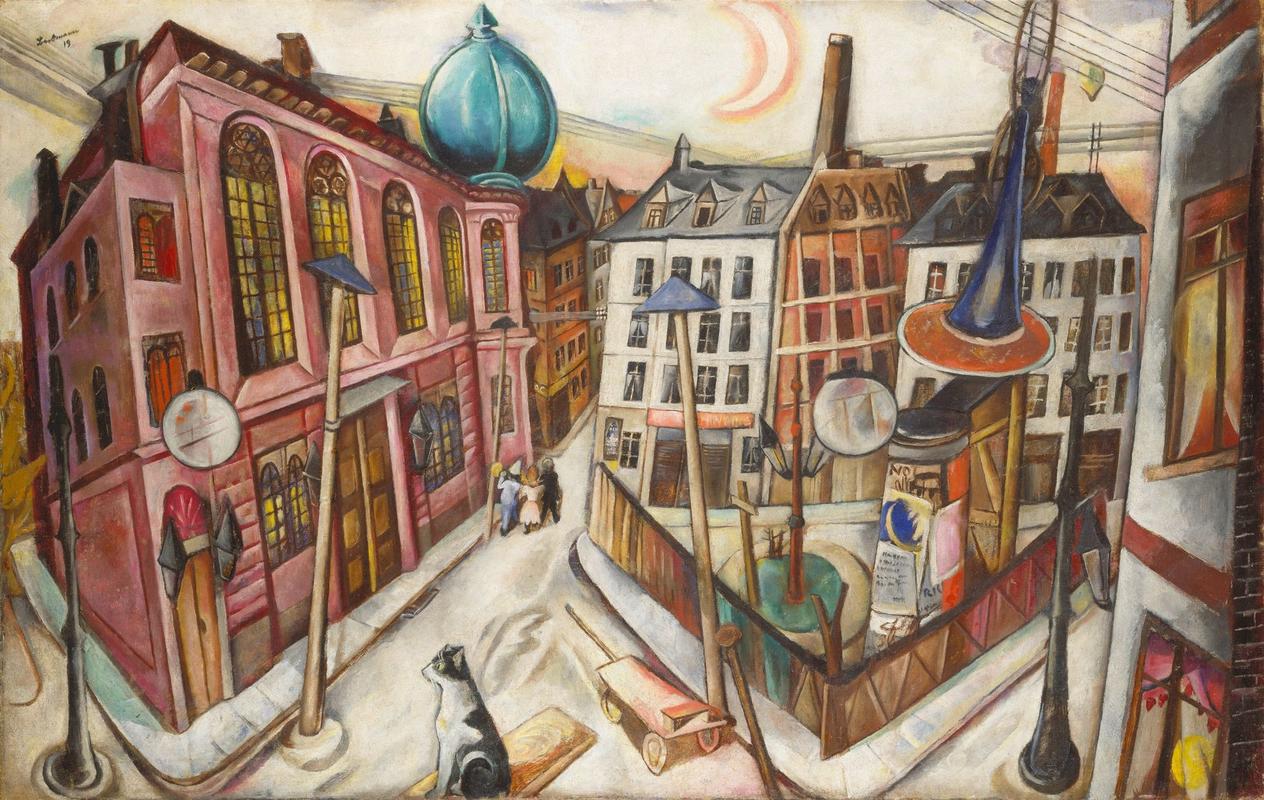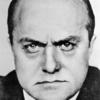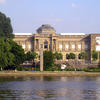More about The Synagogue in Frankfurt am Main

Sr. Contributor
Max Beckmann painted The Synagogue in Frankfurt am Main in 1919.
It is a wildly colorful painting that features buildings at strange angles that would make one dizzy if they were standing among them. However, this painting, on display at the Stäedel Museum in Frankfurt, is more than a cool-looking cityscape; there’s a lot going on here. First and foremost, the title subject, the synagogue in the historic Jewish neighborhood in the Börneplatz district of Frankfurt, no longer exists. It was set on fire and burned down on the night of November 9, 1938, otherwise known as Kristallnacht, or the “night of broken glass.” This was the result of a Nazi pogrom against Jewish people and their buildings, businesses, and synagogues, that led to the murders of at least 91 Jews and the destruction of as many as 267 synagogues and over 7,000 businesses throughout Germany and Austria.
After the war, this painting was sometimes viewed as being prophetic, as the synagogue looks like it could be on fire with the blazing yellow seen through the windows, not to mention what looks like fire in the background of the buildings. It’s likely that the colors are just an interpretation of the sunrise, since the figures in the picture are meant to be Beckmann and friends returning home after a long night of partying in celebration of Carnival.
In 1915, after Beckmann was released from the army, where he served as a medical orderly, he moved to Frankfurt. During the war he experienced a “nervous collapse,” likely what we now call PTSD (post-traumatic stress disorder). His exposure to the horrors of war would affect his painting style; his work became more “distorted” and strange, but this is part of what makes it interesting.
Beckmann wasn’t Jewish, so some might wonder why he chose a synagogue as the subject of a painting. His studio was a thirty-minute walk from the synagogue, so he may have simply happened upon a building he found while taking a stroll. Designed by the Berlin architect Siegfried Kusnitzky, the building would have stood out amongst its surroundings, as one author describes: "Kusnitzky dressed the synagogue’s corner façade in rusticated masonry, measured fenestration, and a graceful monumentality reminiscent of the Italian Renaissance. He crowned the medieval turret-like structure that joined these perpendicular walls with a copper cupola whose near-eastern silhouette gave the synagogue an exotic profile amidst the ordinary apartment and shop facades on the Börneplatz." He also had friends who were part of the “Jewish-German cultural elite” in Frankfurt, so these connections could have inspired him to pick the synagogue, and that the building held significance to Beckmann as "a kind of orthodox spiritual safeguard against Frankfurt’s modern hurly-burly as well as the simmering urban violence and growing anti-Semitism that afflicted Germany after the armistice and end of World War I."
So, what’s up with the cat? Is he really just sitting on a board that hangs out into the street? Or is he actually sitting on an unseen window sill? This particular cat, who was named Titti, belonged to his friends, Ugi and Fridel Battenberg, the other figures represented in the painting, though critics have suggested that the feline figure is more symbolic, a “mysterious idol, a sphinx – knowing and unmoved.” Beckmann is well known for his use of symbols, so it's possible there is a greater significance to Titti's prescence. Then again, perhaps Beckmann was simply imagining Titti waiting patiently at the window for his beloved owners to return home.
The acquisition of the painting also has an intriguing backstory. The director of the Staedel Museum between around 1938 and the early 1970s was Ernst Holzinger. Holzinger was an interesting character; while he was not an “official” member of the Nazi Party, he was none the less appointed to be an “Authority for the Securing and the Utilization of Cultural Assets from Jewish Ownership for the Purposes of the Reich” in 1941. This meant he worked on appraisals for artworks that were looted by the Nazis. However, he also secretly stored a large collection of Expressionist art and by hiding it was able to keep it out of Nazi hands.
Holzinger very much wanted this painting for the museum’s collection. He believed that Synagogue had a special connection to Frankfurt, and therefore to the local museum, due to the perceived “prescience” of the work. The painting belonged to a wealthy businessman, Herbert Kurz, who purchased it around 1936 and from 1951 to 1972 Holzinger tried doggedly to convince Kurz to let the museum have the painting, either by donation or purchase. Holzinger was ultimately successful in the procurement of the work, helped by the city and various private donations.
Sources
- Calvocoressi, Richard. "Beckmann's 'Carnival': A New Acquisition for the Tate." The Burlington Magazine 124, no. 954 (1982): 557-38. www.jstor.org/stable/880934.
- Hofmann, Michael. “Max Beckmann: Painting as Wisdom.” Modern Painters 15, no. 4 (Winter 2002): 60–65.
- Leydier, Richard, and C., tr Penwarden. “Max Beckmann: Un Individu Sympathique.” Art-Press, no. 282 (September 2002): 27–32.
- A Kristallnacht Story: Max Beckmann's prophetic painting of the Frankfurt Synagogue Destroyed on Nov 9, 1938 and The Public Debate it Generated after the Holocaust. https://www.winnipegjewishreview.com/article_detail.cfm?id=5225&sec=1&t… Kristallnach
- Hamlin, Amy K. “The Conditions of Interpretation: A Reception History of The Synagogue by Max Beckmann.” nonsite.org, January 2, 2014. https://nonsite.org/article/the-conditions-of-interpretation-a-receptio….
- “Kristallnacht.” United States Holocaust Memorial Museum. United States Holocaust Memorial Museum. https://www.ushmm.org/collections/bibliography/kristallnacht.











